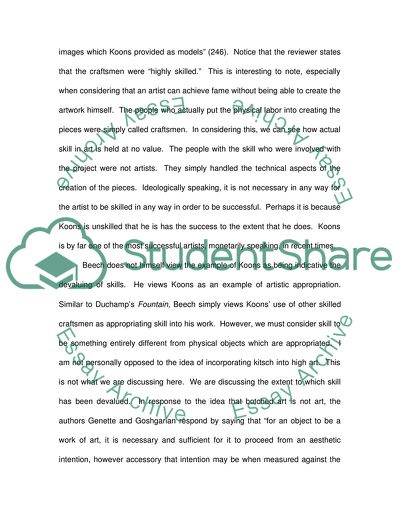Cite this document
(Skill in Art Article by Dave Beech Example | Topics and Well Written Essays - 2000 words, n.d.)
Skill in Art Article by Dave Beech Example | Topics and Well Written Essays - 2000 words. Retrieved from https://studentshare.org/visual-arts-film-studies/1552655-the-art-of-skill
Skill in Art Article by Dave Beech Example | Topics and Well Written Essays - 2000 words. Retrieved from https://studentshare.org/visual-arts-film-studies/1552655-the-art-of-skill
(Skill in Art Article by Dave Beech Example | Topics and Well Written Essays - 2000 Words)
Skill in Art Article by Dave Beech Example | Topics and Well Written Essays - 2000 Words. https://studentshare.org/visual-arts-film-studies/1552655-the-art-of-skill.
Skill in Art Article by Dave Beech Example | Topics and Well Written Essays - 2000 Words. https://studentshare.org/visual-arts-film-studies/1552655-the-art-of-skill.
“Skill in Art Article by Dave Beech Example | Topics and Well Written Essays - 2000 Words”. https://studentshare.org/visual-arts-film-studies/1552655-the-art-of-skill.


